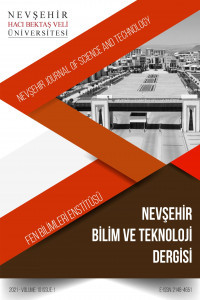The Evaluation of residual chlorine from well drinking water in some quarters in Erbil city-North Iraq.
Free Chlorine, Water Consumer
The Evaluation of residual chlorine from well drinking water in some quarters in Erbil city-North Iraq.
Free Chlorine, Water Consumer,
___
- :Acher, A .J. Sunlight photooxidation of organic pollutants in wastewater (1985). Water Science and Technology, 17, pp.623-632.Alsheyab, M.A. and Munoz, A.H. (2006). Reducing the formation of trihalomethanes (THMs) by ozone combined with hydrogen peroxide (H2O2/O3). Desalination, 194, pp.121-126.Boccelli DL, Tryby ME, Uber JG, Summers RS (2003). A reactive species model for chlorine decay and THM formation under rechlorination conditions. Water Res 37:2654–2666.Carrico B, Singer PC (2009). Impact of booster chlorination on chlorine decay and THM production: simulated analysis. J Environ Eng ASCE 135 (10):928–935.Clark R M. (2012). Water quality modeling. American Water Works Association, USA.Cotton, F.A. and Wilkinson, G. (1988). Advanced Inorganic Chemistry, Fifth Edition, John Wiley and Sons, New York.Gauthier,V.; Besner M-G; Barbeau, B; Millette, R and Prèvost, M. (2000). Storage tank management to improve drinking water quality: Case study. J.Water.Resour.Plng. and Mgmt.126 (4): 221-228. https://www.water-id.com/html/index.phpMc Guire, M.J. (2013). The Chlorine Revolution: Water Disinfection and the Fight to Save Lives. AWWA: Denver, Colorado.Shihab MS, Alhyaly AI, Mohammad MH (2009) Simulation of Chlorine concentrations in Mosul University’s Distribution Network using EPANET program. J Al-Rafidain Eng 17(6):28–41.Trussell, R.R., (1999). An Overview of Disinfectant Residuals in Drinking Water Distribution Systems, J. Water SRT – Aqua. 48 (1): 2-10.Vasconcelos, J. J., Rossman, L. A., Grayman, W. M., Boulos, P. F. and Clark, R. M. (1997). "Kinetics of chlorine decay." Journal AWWA, 89(7), 54-65.WHO (2017). Guidelines for Drinking-water Quality, 4th Edition, Incorporating the 1st Addendum. WHO Press: Geneva, Switzerland. WHO (2018). Drinking-water Fact Sheet [Online]. Available: http://www.who.int/news-room/fact-sheets/ detail/drinking-water (accessed 10-9-18).World Health Organization, Centers for Disease Control and Prevention. de Benoist B, McLean E, Egli I, Cogswell M, eds. Worldwide prevalence of anaemia 1993–2005. Geneva, World Health Organization, 2008.Hussein et.l(2019). Phycolimnological Study On Water Bodies Of Two Major Parks In Erbil Province (North Iraq). Fresenius Environmental Bulletin.8858-8864
- ISSN: 2148-466X
- Yayın Aralığı: Yılda 2 Sayı
- Başlangıç: 2012
- Yayıncı: Nevşehir Hacı Bektaş Veli Üniversitesi
1.Derece Deprem Kuşağında Yer Alan Balıkesir-Burhaniye Kenti İçin Deprem Parkı Önerisi
Mersin Bölgesi Rüzgar Hız Verilerinin Yapay Sinir Ağları ile Analizi ve Uygulanabilirliği
Mustafa AKKAYA, Aytaç GÜLTEKİN, Kadir SABANCI, Selami BALCI, Hakan SAĞLAM
Diabetus Mellituslu Bireylerin Tamamlayıcı ve Alternatif Tedavi Kullanma Durumları
Batı Akdeniz Bölgesi Crataegus L. Taksonlarının Bazı Morfolojik ve Biyokimyasal Özellikleri
Nurtaç ÇINAR, Fatma UYSAL BAYER, Fırat AYAS, Arzu YEĞİN, Mehmet ÖTEN
Çocuklarda Akılcı İlaç Kullanılmasının Önemi Ve Ebeveynlere Öneriler
Burak NALÇACI, Volkan KILIÇLI, Mehmet ERDOĞAN
Effect of Pre-Harvest Oxalic Acid Treatment on shelf-life of Apricot cv. ‘Roxana’
Seda SEVİNÇ ÜZÜMCÜ, Mehmet Ali KOYUNCU, Cemile Ebru ONURSAL, Atakan GÜNEYLİ, Derya ERBAŞ
